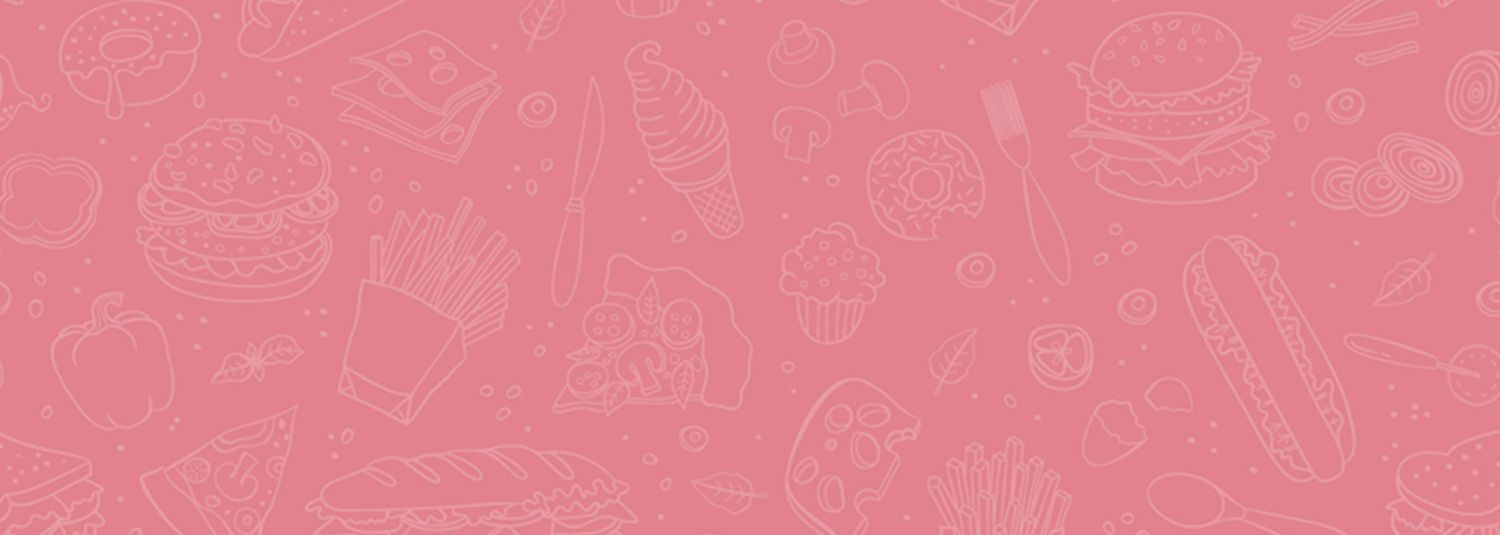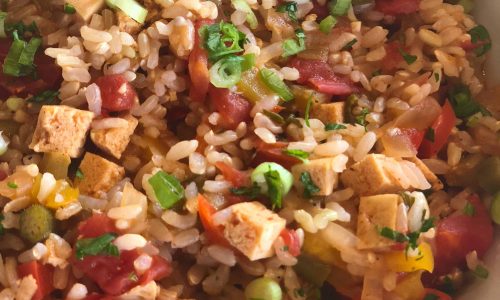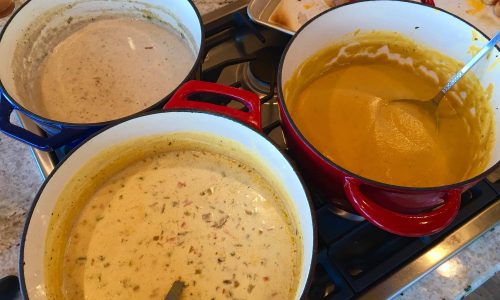 What is not to love about pies and tarts? I have made pies all my life, including my earliest pies when I was a young teenager. I didn’t know anything about gluten formation then and couldn’t figure out why my pie crust had the texture of cardboard. I just mixed that dough until it was completely together since I didn’t know better. In recent years I have learned not to overmix the dough but my very limited practice, mostly Thanksgiving and maybe Christmas, has not always been successful. The great thing about culinary school is finding out why things didn’t turn out right. Chef Kurima explained the importance of chilling the pie dough before rolling it, something I always did, but then she also advised chilling the pie crust after it’s been rolled, something I never did. Chilling it keeps it from shinking while baking, which is what happened to my apple pie a few months ago. She gave us hints such as putting large rubber bands on the ends of the rolling pin to keep the dough from getting thinner than 1/8 inch and the best one was using a method where the butter is chopped, put in with the flour and placed on the working surface. Then a rolling pin is used to roll the bits of butter, the flour is moved around, more butter is rolled and this is repeated several times. Liquid is added until the dough holds together. We tried this technique and it worked very well. The interesting thing is that it took a lot less liquid than the other methods. We also learned to move the dough around as we were rolling it out, use as little flour as possible, and brush off excess flour before baking.
What is not to love about pies and tarts? I have made pies all my life, including my earliest pies when I was a young teenager. I didn’t know anything about gluten formation then and couldn’t figure out why my pie crust had the texture of cardboard. I just mixed that dough until it was completely together since I didn’t know better. In recent years I have learned not to overmix the dough but my very limited practice, mostly Thanksgiving and maybe Christmas, has not always been successful. The great thing about culinary school is finding out why things didn’t turn out right. Chef Kurima explained the importance of chilling the pie dough before rolling it, something I always did, but then she also advised chilling the pie crust after it’s been rolled, something I never did. Chilling it keeps it from shinking while baking, which is what happened to my apple pie a few months ago. She gave us hints such as putting large rubber bands on the ends of the rolling pin to keep the dough from getting thinner than 1/8 inch and the best one was using a method where the butter is chopped, put in with the flour and placed on the working surface. Then a rolling pin is used to roll the bits of butter, the flour is moved around, more butter is rolled and this is repeated several times. Liquid is added until the dough holds together. We tried this technique and it worked very well. The interesting thing is that it took a lot less liquid than the other methods. We also learned to move the dough around as we were rolling it out, use as little flour as possible, and brush off excess flour before baking. 
We also had a lesson on laminated dough. Think puff pastry and croissants. We learned to “lock the butter” and will continue with this subject next week. We made a dough, rolled it into a square, took 9.5 ounces of butter (yes–that is a lot of butter) and flattened it, then placed it in the center of the rolled and dough, folded in the edges of the dough like an envelope and double wrapped. We made both puff pastry and croissant dough. Next week we’ll continue with the next steps. I have a feeling I will not be making too much laminated pastry on my own since butter is on my list of things to avoid for healthy heart reasons.
Pie crust, on the other hand, can be made with a combination of vegetable shortening and butter and takes less than laminated dough. We made the following:
Pate Brisee
12 oz pastry flour
.3 oz salt (1 1/2 tsp)
.3 oz sugar (1 1/2 tsp)
6 oz butter, chilled
4 oz eggs
.6 oz water (4 tsp)
4 drops vanilla extract
We also made Pate Sucree (tart dough) which was similar to the brisee, except we creamed the butter and sugar like cookie dough.
We chilled our doughs, rolled them out, place dough in mini pie tins, chilled again, then blind baked them. Blind baking involves docking the dough (poking holes in it too keep it from puffing up) and placing a piece of foil on the crust weighted down by beans, then baking it.
Our crusts were baked and we all sampled them. Some were made with butter only (best flavor), shortening only (bland), and a combination of both (ok). We also sampled the baklava we made as a class last week. I have never made baklava and have had it many times but didn’t care much for it, however this baklava was wonderful, not too sweet and very flavorful. I will definitely make it at home. I will also practice pie making as soon as possible.
Preparing to lock in the butter…


